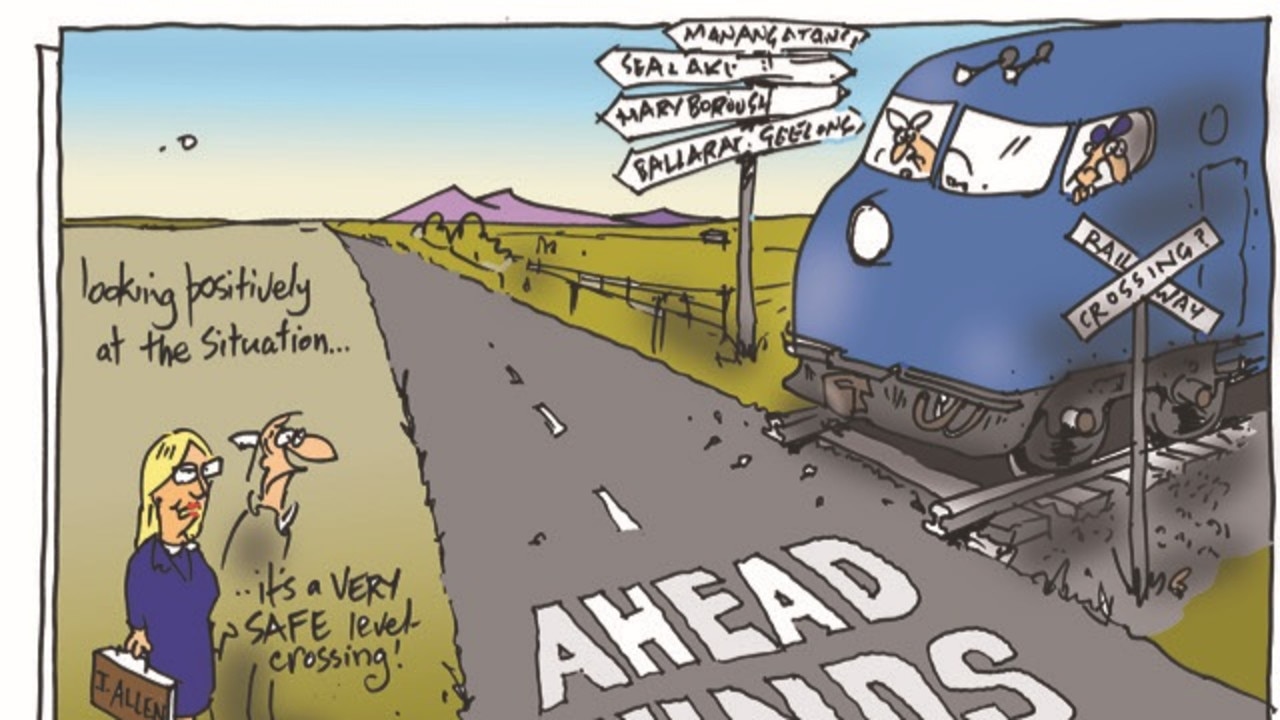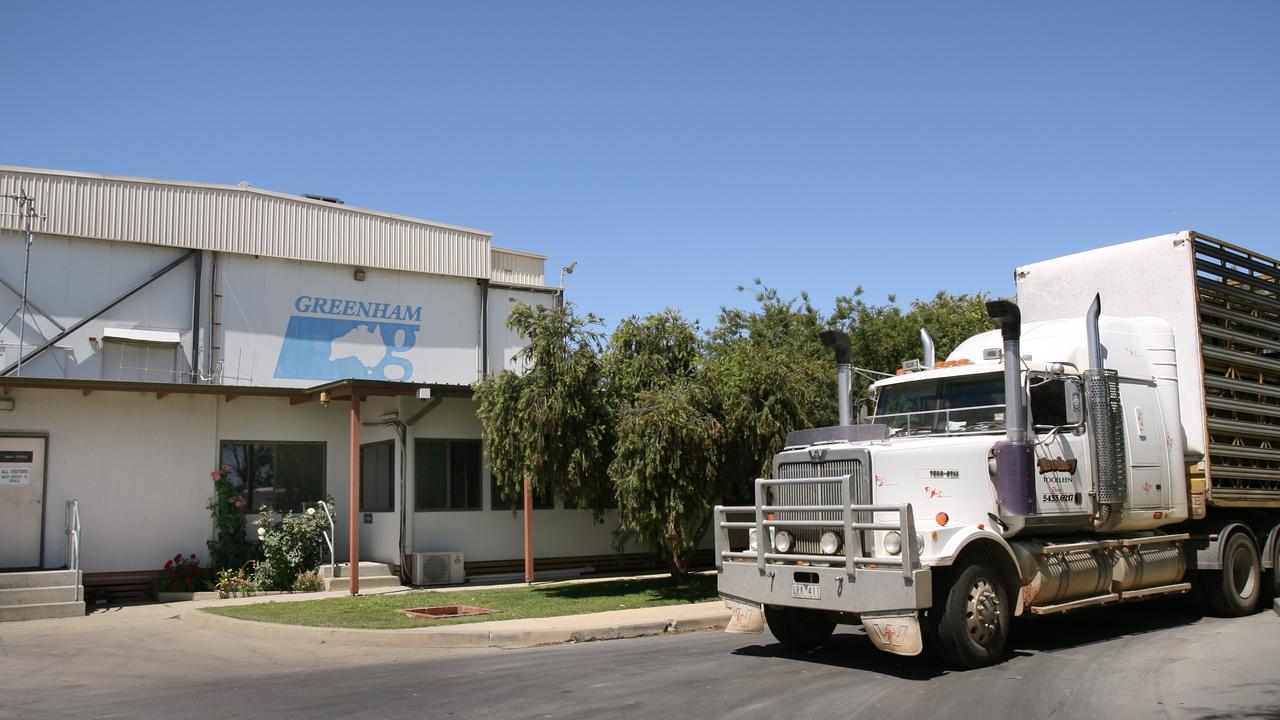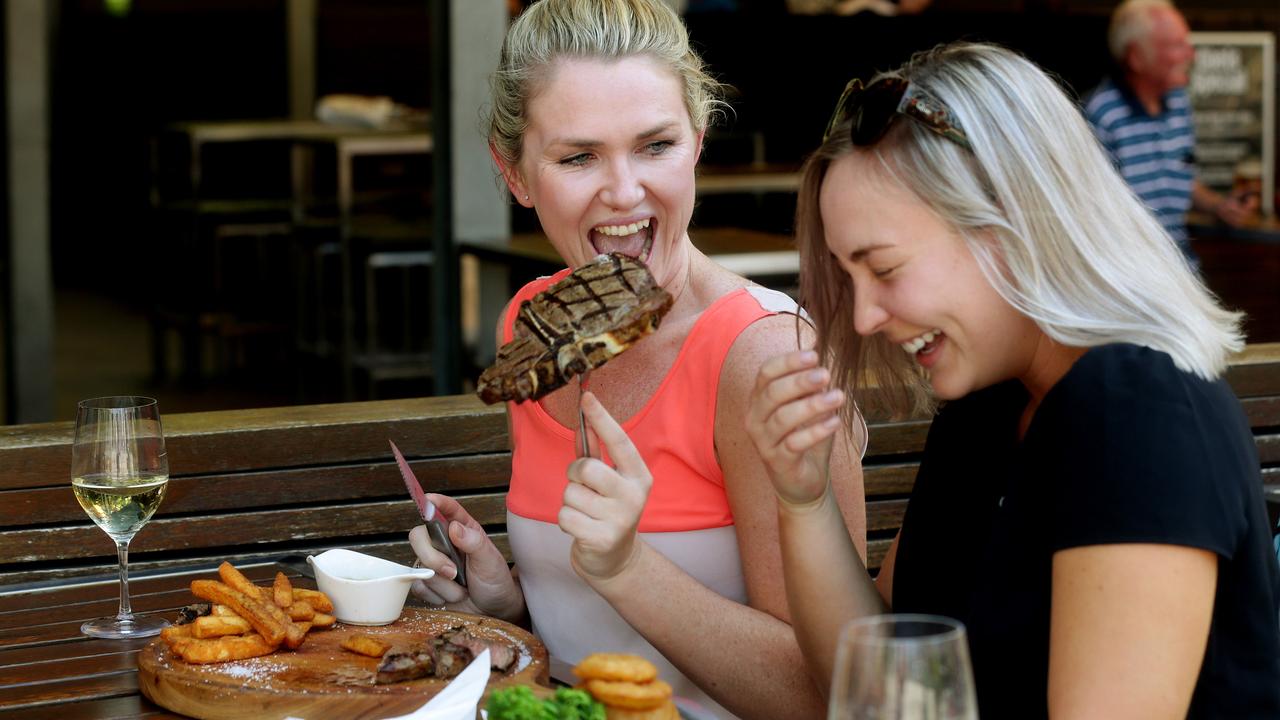Rural shires meet rates cap by demanding more from ag
Rural councils are releasing draft budgets that impose hefty rate hikes on farmers but cut contributions for residents and shopkeepers.
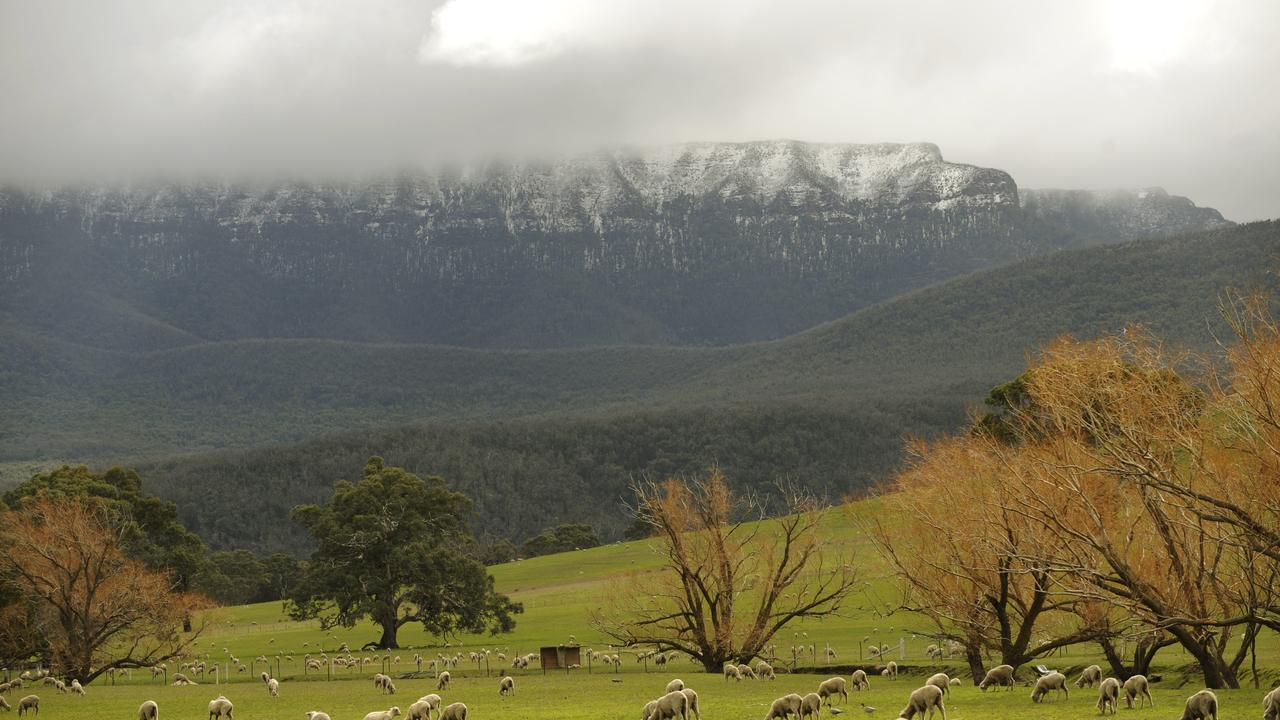
FARMERS are being forced to shoulder an even greater share of Victoria’s rates’ burden, with councils releasing draft budgets that impose rate hikes of 8-10 per cent in 2020-21.
Southern Grampians Shire is among the worst, slugging farmers with an average 10.17 per cent rate hike, while cutting residential ratepayers’ contribution by 7.74 per cent.
Meanwhile the council is offering shopkeepers in Hamilton an even better deal, dropping their rates by an average 9.16 per cent.
While drought, fire and COVID-19 have crippled regional economies and led to federal and state governments urging restraint, regional councils are loading up farmers with even more debt.
Farm rates are set to rise by an average 8.75 per cent in the Pyrenees shire, while residential rates are cut by 4.51 per cent.
Gippsland’s Wellington Shire councillors are overseeing a 9.8 per cent hike in farm rates, while Hume wants rural landholders to pay 8.91 per cent more.
Mitchell Shire’s 351 rural landholders with 40-100ha will pay an additional 14.3 per cent in rates.
The Andrews Government’s “Fair Go Rates” system is meant to cap the overall 2020-21 rate rise to an average 2 per cent.
But councils have still been able to crank up farm rates beyond 2 per cent and stay within the average, by keeping their municipal charges and increases for all other ratepayers at or below the cap.
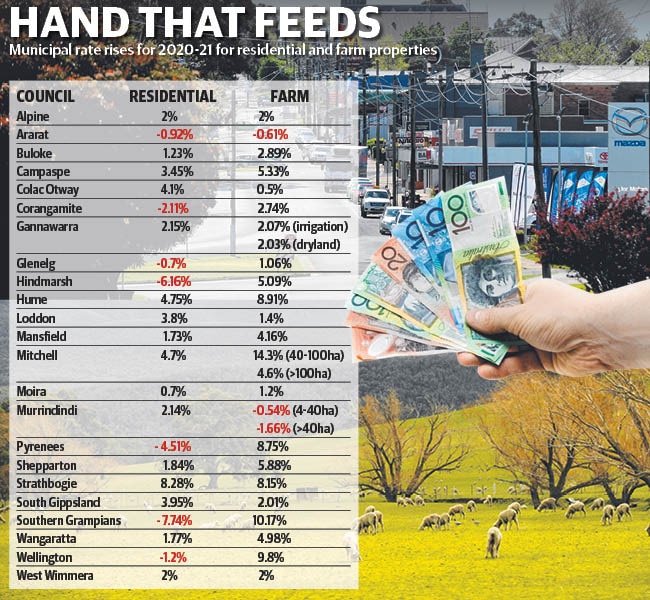
Even farmers in the fire-hit shire of Wangaratta have been slugged with a 4.98 per cent rate hike, while residential ratepayers living within a stone’s throw of the city’s library, sports and other facilities face an average rate rise of just 1.77 per cent.
In contrast, the neighbouring fire-ravaged Alpine Shire has refused to manipulate rate rises, simply applying a 2 per cent increase to each category – rural, residential and commercial.
The Alpine Shire’s draft budget states it has curbed farm rates to “more equitably spread the general rate burden” and “to ensure that highly productive farming land is not rated at levels that force farmers to seek to subdivide and sell off parcels to remain viable”.
But that policy has been ignored by most Victorian councils.
In the Goulburn irrigation district Shepparton City Council wants to hit farmers, who’ve struggled to remain viable in the face of sky-high water and fodder prices, with a 5.88 per cent rate hike, while keeping the residential rate rise to 1.84 per cent and 1.21 per cent for the commercial sector.
Across the state higher farm values are driving up rates, exacerbated by the move to annual revaluations from 2018, rather than every second year.
Valuer Sam Paton said he had real concerns, given all council valuations were now conducted by the Victorian Valuer General’s staff, which risked aggregating data on properties ranging from 20ha to 200ha.
“The data is getting increasingly unreliable, because of this one-size-fits-all approach,” Mr Paton said. “I just completed a rates objection on a Strathbogie property and got it (the valuation) down by $600,000.”
The impact of rising farm values is clearest across Victoria’s west, where Southern Grampians chief executive Michael Tudball said in totality, rural property values have increased by 22.08 per cent.
“However, some (rural) properties will have increased more than that and some will have decreased, but when applying the rate in the dollar, “on average” those properties will contribute 10.17 per cent more than last year.
“Likewise the total value of residential properties have increased by 2.31 per cent, some will have increased more than that and some will have decreased. But when applying the rate in the dollar, “on average” those properties will contribute 7.74 per cent less than last year.”
In the state’s southwest Corangamite Council farm values have risen by 7.52 per cent, while residential value rose by just 1.63 per cent and industrial land declined by 1.95 per cent.
The net result is that council intends to collect 2.11 per cent less in residential rates in 2020-21 and 5.81 per cent less from industrial landowners, but will lift farm rates by 2.74 per cent.
The result is that Corangamite council intends to collect $10.5 million across 2885 rural landholder assessments, with many farmers holding several assessments, but just $7.98 million from the shires remaining 6763 residential, commercial and other landholder groups.
Victorian Farmers Federation president David Jochinke said he was concerned many councils were shoving inequitable budgets through without proper community consultation in the midst of COVID-19 restrictions and “noise”.
“We sent letters to all councils raising our concerns on them shifting a greater burden on to farmers,” Mr Jochinke said.
“We’ve had some come back to us and say they didn’t take the opportunity during the drought, when land prices increased, to raise rates. But they’re saying now things have improved they’ll take the opportunity to raise rates.”
But the councils’ claims don’t match the reality of past years, where The Weekly Times has reported on farmers’ rates burden rising at a much greater pace than residential and commercial landholders in Mildura.
Last year Victoria’s largest shire, Mildura, stretching from the Murray River to south of Ouyen, slapped farmers with a 23 per cent rate hike, while cutting residential rates by 0.13 per cent.
The state’s second largest shire, East Gippsland, also tried to impose a 12.09 per cent rate hike on its drought-ravaged farmers, which it eventually wound back in the wake of The Weekly Times’ coverage.
Mr Jochinke said the VFF would target councils and councillors who failed to deliver equitable budgets, by “putting people in that do care for the broader community”.
MORE

